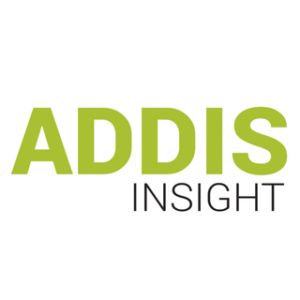IMF Support for Ethiopia’s Macroeconomic Reform Program
The Board of the International Monetary Fund (IMF) has recently endorsed Ethiopia’s macroeconomic reform program, detailing the decision and the agreements made with the Ethiopian government. A central aspect of this support is the Koysha Hydroelectric Dam project, a pivotal development initiative for the country.
Koysha Hydroelectric Dam Project Overview
The Koysha Hydroelectric Dam is a landmark project in Ethiopia’s quest to enhance its energy infrastructure and drive economic development. This ambitious project aims to provide a significant boost to Ethiopia’s electricity generation capacity, especially for rural areas that currently lack reliable power supply. The dam is situated on the Omo River, a vital waterway in southern Ethiopia, and is expected to contribute to both rural electrification and regional economic development.
Current Status and Construction Progress
As of the latest update, the Koysha Hydroelectric Dam project is approximately 66 percent complete. The project has faced several delays primarily due to difficulties in securing sufficient concessional financing. Despite these setbacks, the Ethiopian government remains committed to completing the dam, which is integral to its development strategy.
Importance and Benefits
The Koysha Hydroelectric Dam is not just a significant infrastructure project; it also plays a critical role in Ethiopia’s broader development goals. The dam is designed to:
- Enhance Rural Electrification: By providing a stable and sustainable power supply to rural communities, the dam will improve living conditions and support local development.
- Generate Export Revenues: The dam’s electricity generation capacity will enable Ethiopia to export power to neighboring countries, creating a new revenue stream and strengthening regional economic ties.
- Contribute to Climate Change Mitigation: Hydroelectric power is a renewable energy source that helps reduce reliance on fossil fuels, thereby contributing to Ethiopia’s climate change mitigation efforts.
IMF Agreement and Exemption
Under the IMF agreement, the Ethiopian government is generally restricted from taking non-concessional (high interest rate) foreign loans during the macroeconomic reform program. However, an exemption has been granted for the Koysha Hydroelectric Dam project due to the critical need for financing to complete the dam.
Details of the Exemption
The Ethiopian government has requested to borrow $950 million at market rates for the completion of the Koysha project. This exemption from the usual restriction on non-concessional borrowing is justified by the inability to secure concessional financing for the project. The exemption underscores the project’s importance to Ethiopia’s development goals, including:
- Rural Electrification: Ensuring reliable electricity supply to underserved areas.
- Economic Development: Generating export revenues and fostering regional economic integration.
- Climate Change Mitigation: Supporting Ethiopia’s efforts to reduce greenhouse gas emissions through renewable energy.
The project is currently 66 percent complete and has received approval from financial institutions due to its significance in providing electricity to rural communities and contributing to Ethiopia’s economic growth.
Funding and Financial Arrangements
To address the remaining funding needs for the Koysha Hydroelectric Dam project, the Asset and Debt Management Corporation (LAMC) has announced the issuance of 900 billion birr in bonds. These bonds are a key component of the financial strategy to support the project and address associated debts.
Bond Issuance Details
The bonds issued are designed to:
- Guarantee Debt: They will cover the debts of government development organizations, which are crucial for managing financial obligations related to the dam project.
- Repay Existing Debt: The bonds will address the remaining debt of the Ethiopian Electricity Corporation.
- Increase Capital Capacity: The funds raised will also be used to bolster the capital of the Commercial Bank of Ethiopia, ensuring it has the financial strength to support ongoing and future projects.
Usage of the Bonds
The Commercial Bank of Ethiopia will use the bonds to write off 580 billion birr of debt accumulated by government development organizations under LAMC. Additionally, the bonds will enable the bank to repay the remaining 240 billion birr owed by Ethiopian Electric Power. The remaining bond amount will be used to enhance the bank’s own capital.
The bonds, issued on June 7, 2016, have a ten-year term. They can be converted into cash either by pledging them to the National Bank or by utilizing them in financial transactions between banks. This flexibility is designed to provide the bank with the necessary liquidity to manage its operations and support the Koysha project.
World Bank Loan
The World Bank has agreed to provide a $700 million loan to strengthen the Commercial Bank of Ethiopia and the Development Bank of Ethiopia. This loan is essential for supporting the financial infrastructure required to complete the Koysha Hydroelectric Dam project.


Requesting for koyaha hydroelectric dam team,
I am keen interested for power generation through hydro power. But it seems we can multiply the power generation by adding two units if required. Basically the outward flow of water may be connected to fuel cell, where we can generate only hydrogen gas and run hydrogen steam turbines whenever required and the parallel water desalination for further water supply.